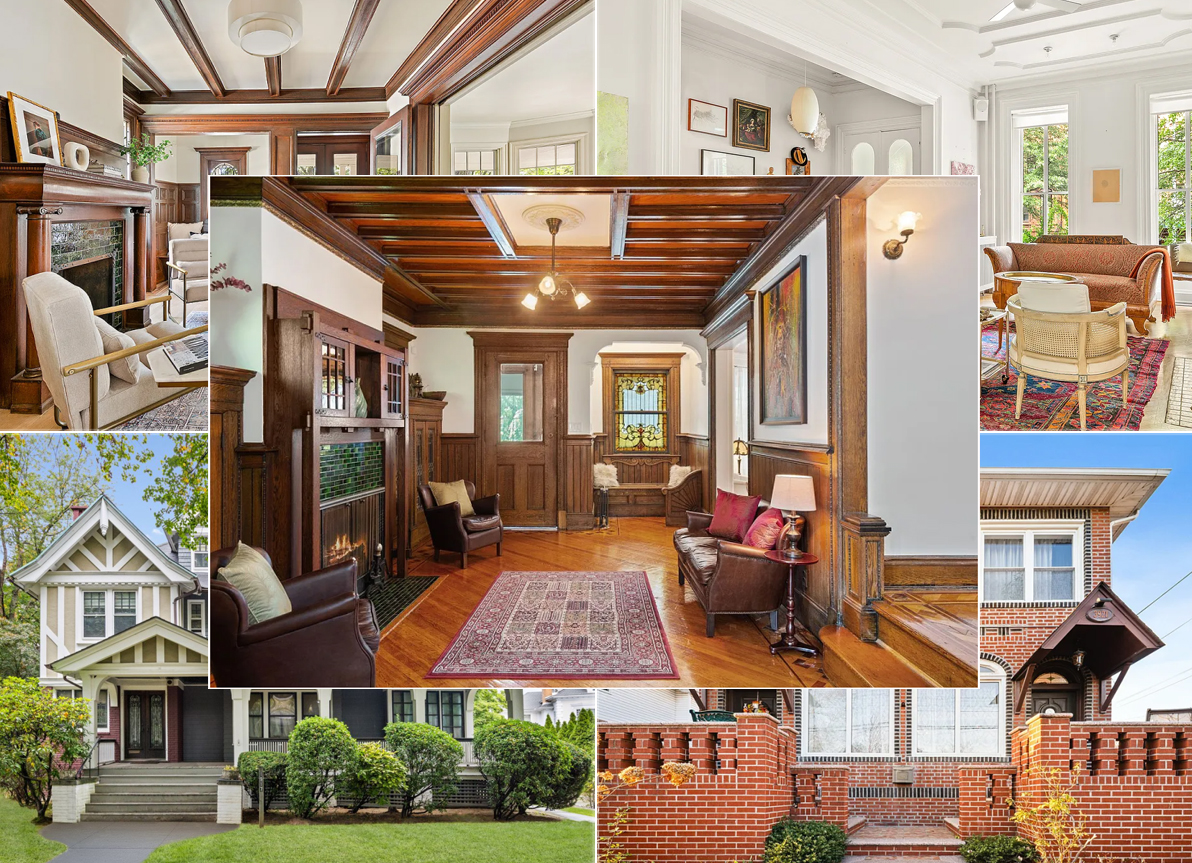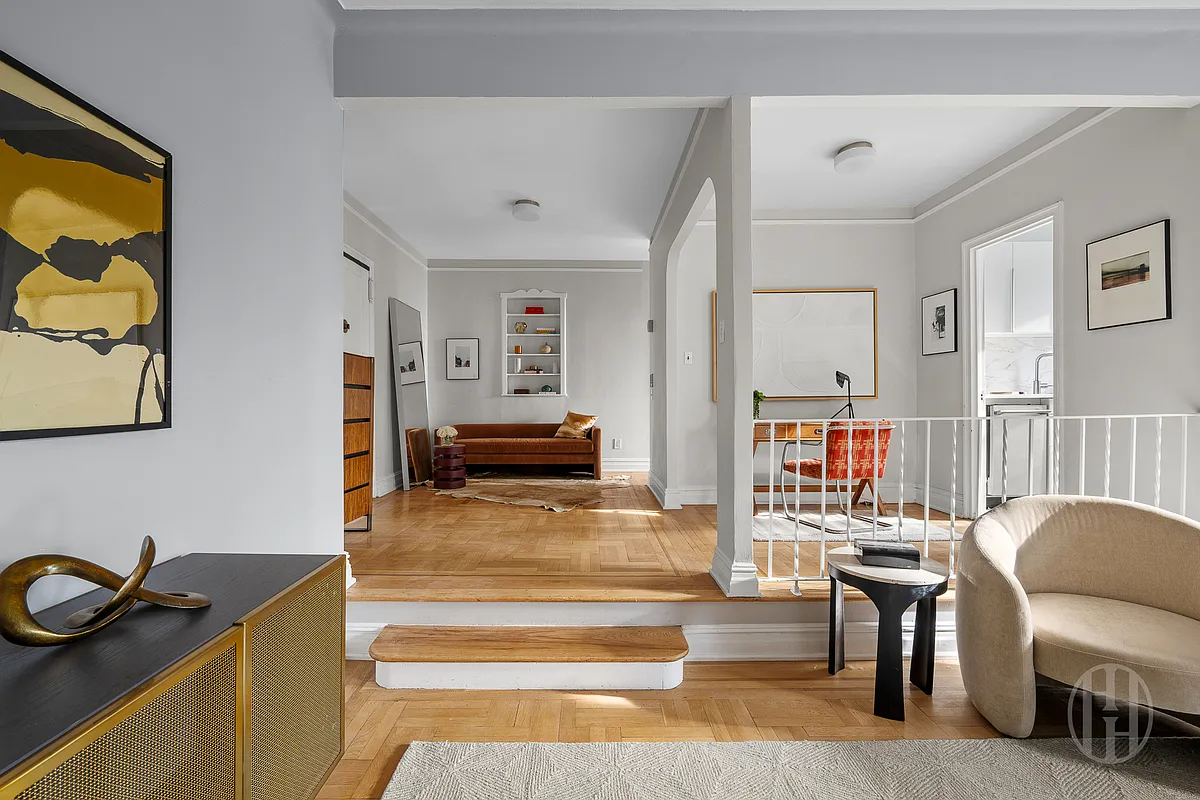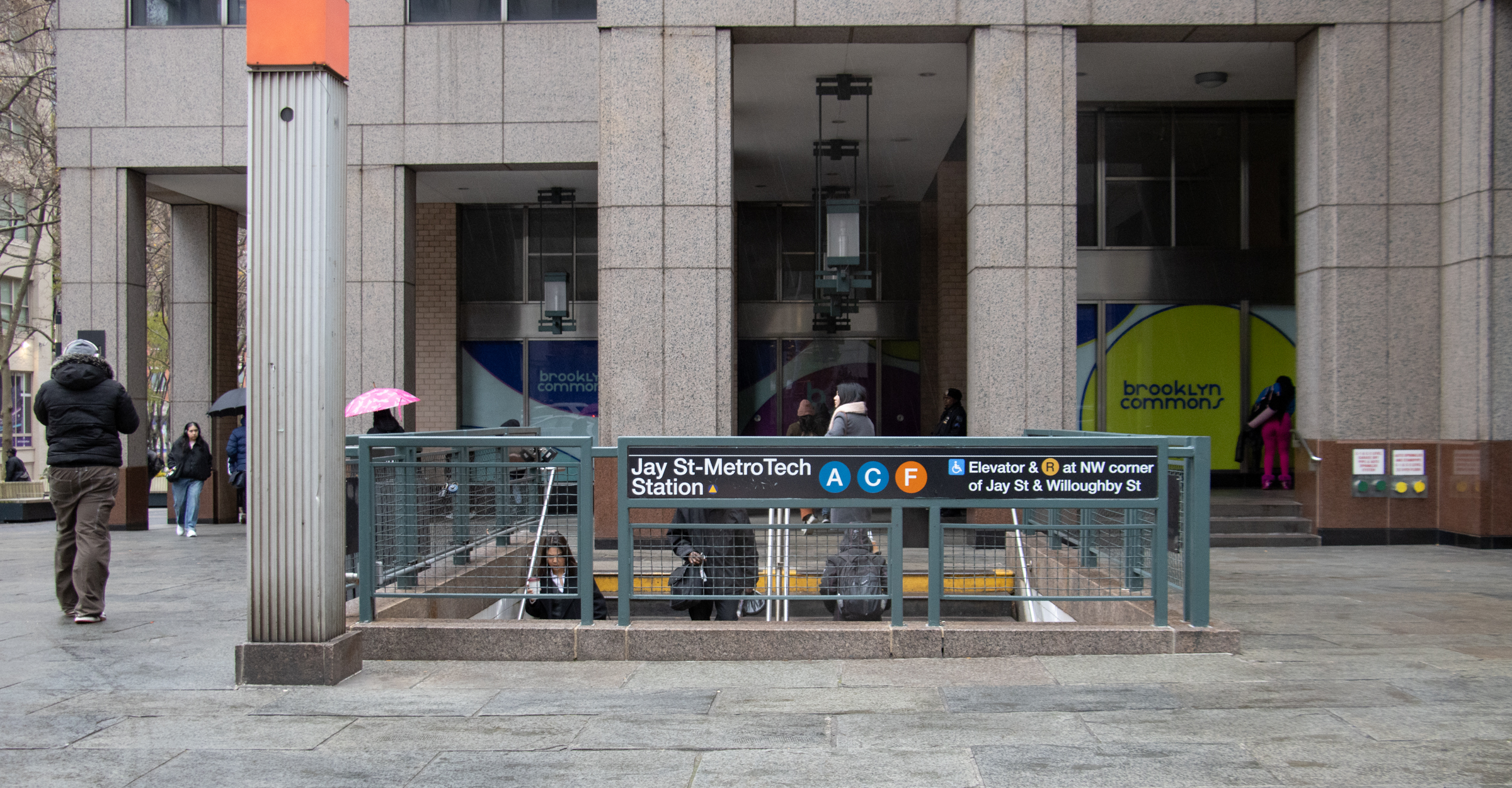Walkabout: It's Time for Arts and Crafts
When we think of the Arts and Crafts Movement in the United States, Brooklyn seldom comes to mind as a hotbed of A&C style. We think of suburban bungalows, the Midwest and California, not the city. Did the Arts and Crafts movement pass us by? First, some background. The American Arts and Crafts Movement is…


When we think of the Arts and Crafts Movement in the United States, Brooklyn seldom comes to mind as a hotbed of A&C style. We think of suburban bungalows, the Midwest and California, not the city. Did the Arts and Crafts movement pass us by?
First, some background. The American Arts and Crafts Movement is an off-shoot of the British movement of the same name. I could spend a couple of columns on them alone, but let me summarize by saying that the philosophical principles of John Ruskin are at the core of the movement.
He was one of Victorian England’s most influential thinkers; a poet, artist, environmentalist, scientist, and social critic. In an age of fussy and gaudy materialism, urbanization and industrialization, he advocated simplicity and a return to nature and a reverence for the past.
His ideas were taken up by the Pre-Raphaelite Brotherhood, a group of artists, craftspeople and writers, whose works were inspired by Medieval and Renaissance themes, such as courtly love and knightly duty, and the satisfaction of making something by hand.
The greatest of these artists was William Morris. Morris, a complicated and interesting man, decided to forgo a fine arts career, and concentrate on the decorative arts. Using his home, called Red House, designed by architect Phillip Webb, as a canvas, Morris and friends designed and produced a wealth of prints for fabrics, rugs and wallpaper, as well as furniture and other decorative objects.
Their credo was simplicity, taking their ideas from the simple furniture lines of the medieval keep, the country cottage, and their own fertile imaginations. The prints, drawn from the flora and fauna around Morris’ country home, were unlike anything else produced at the time, and enhanced the simple furniture.
Although designed with an egalitarian everyman in mind, the handmade products were actually too labor intensive to be affordable to anyone other than the upper classes. However, they proved to be extremely popular, and an international movement, called Arts and Crafts, was born.
Its influence was seen not only in decorative furnishings, but also in architecture, especially in the choices of building materials, and designs. Phillip Webb’s Red House kicked off an amazing period of creativity in building design in England, which spread to other parts of Europe, and to North America.
In America, the Arts and Crafts Movement took hold in several different ways. Gustaf Stickley, a Binghamton, NY furniture maker, was inspired by the simple shapes and materials of Morris’ furniture, which he saw on a trip to England.
Using plain quarter sawn oak, simple lines, tenon and key construction and simple upholstery, he created the first Craftsman line of furniture in 1898, operating from upstate Eastwood, NY. By 1900, the Mission furniture line was a fully developed, distinctively American idea, further developed by Stickley’s publication of The Craftsman, a magazine of ideas, design and architecture.
From the pages of The Craftsman came Stickley’s first bungalow designs, emphasizing smaller cozier houses, natural materials, and open rooms, with built-in cupboards, seating, and storage. These ideas would be embraced and modified by many architects and builders, including, most famously, the Greene brothers in California, Purcell and Amslie in the Midwest, and Frank Lloyd Wright.

The American Arts and Crafts Movement occurred at time when America was in the Progressive Era, in the early years of the twentieth century before World War I. This was a time of embracing the best of America’s past, and it is no coincidence that the popularity of Neo-Colonial architecture and furnishings takes place at the same time.
The A&C Movement celebrated a simpler time, before Victorian excesses, when handmade objects and furniture were displayed with pride. The popularity of all kinds of pottery, hand hammered copper pieces, and rustic looking lamps and decorative items, which were made by communities of artisans all over the country, are an important part of the Arts and Crafts Movement.
In the new suburbs and towns across America, this new architecture took hold big time, with Craftsman bungalows available in kits from Sears, and entire communities of modest, middle class homes spreading across the country. The movement was especially popular in the West, where the open spaces invited vernacular architects to create their own variations.
In California, the designs of Greene and Greene in Pasadena are perhaps the apex of the Arts and Crafts style. All in all, the Arts and Crafts Movement in the United States gave birth to the bungalow, the ubiquitous Four-Square, and its regional variations, including the classic Chicago bungalow, East Coast suburban Tudor cottages, Southwestern Pueblo style adobes, the Japanese inspired homes of Greene and Greene, and California’s storybook cottages. All emphasize simple designs, with honest wood details, all places where families thrive and the American ideal of the home being the reward of hard work was born.
So what about Brooklyn? We see the Arts and Crafts influence more on the interiors of our buildings, in the tall oak paneling and choice of fireplace tiles and mantles in many Renaissance Revival row houses, and in the beamed ceilings of free-standing houses in Victorian Flatbush.
The architects working in our neighborhoods at this time were not ignorant of styles and trends. Working within the strictures of a 20′ urban plot does not lend itself to too much variety, but inside?

The two-family Kinko houses of Crown Heights North and Park Slope, built between 1910 and 1915, were A&C cottages inside, with a more open layout, built-ins, and Craftsman style lighting fixtures, paneling and tile inside.
Many of Axel Hedman’s limestones also feature A&C details, often mixing interior Neo-Colonial details, such as French doors, leading to rooms with five foot high oak wainscoting, plate rails and other classic A&C details. Victorian Flatbush is home to bungalows and Four-squares, as are parts of Bay Ridge, Bensonhurst and other parts of southern Brooklyn.
Other architects are more influenced by the English building tradition of Arts and Crafts. Row houses in Clinton Hill, and a special row in Crown Heights North illustrate this part of the tradition well, although they are few and far between.
The distinctive use of brick as a building and trim material often heralds a more English style A&C house, and the Crown Heights Cottages are in a class by themselves. The decorative styles of the movement can be used in a variety of homes, and the clean, uncluttered simplicity of Mission furniture lends itself nicely to a spare, modern aesthetic, adding natural warmth to what can sometimes be a cold look.
All in all, the Arts and Crafts Movement is still very much with us, a versatile and valuable style again for the 21st century. I only scratched the surface of this important movement. See Flickr for more photos.



[Photos by Suzanne Spellen]





You can find a beautiful picture of Morris’s handpainted front door of Red House here:
http://wmmorrisfanclub.blogspot.com/search/label/Red%20House
In his own home almost everything was handmade, stenciled, painted, sewn by Morris and his friends/family.
From Brooklyn to Gustav Stickley’s home Craftsman Farms would take about an hour to drive in off peak traffic times. I would suggest that anyone interested in the American Arts and Crafts Period should make this trip, you won’t be disappointed.
You will discover a 30 acre oasis among busy streets, strip plazas and odd jug handle U turns.
Driving onto the grounds you are met by a canopy of tall mature trees that want to turn time back. You park the car in a small stone lot and walk down to the main log house. This is not a log “cabin” it is a home of grand scale with quaint overtones. The furniture and architecture is in perfect harmony and must be experienced. If you want a sneak preview please visit http://www.stickleymuseum.org and if you join you will be invited to all types of events with many of them family oriented. The staff and volunteers are friendly and there to help you enjoy.
When you leave you will understand why Gustav Stickley is important to the Arts and Crafts Movement and to the history of design in the 20th century.
BTW, those old Sears and Roebuck houses are awesome!
They are solid and lovely.
They are all over upstate NY (and probably all over the country) and are really a joy on the outside and inside.
It’s hard to believe such beautiful homes came from kits sold from a department store.
Gustav was the influential Stickley, but I hear Leopold was the better furniture maker.
My father — a prominent small upstate furniture maker — once asked Leopold’s widow: “Why did Gustav get all the credit?” She answered: “He had a better lawyer.”
My guess is Gustav gets all the credit because he was a campaigner.
Thinking about my tour of the Greene houses (and their look-a-likes) on the West Coast, I seem to recall that most of them were built as summer homes for wealthy mid-westerners.
Great job curating some A&C in Brooklyn, and glad you mentioned the Roycrofters (years ago we stayed at a B&B in Cape May NJ that was Roycroft to the hilt, very impressive). A funny thought occurred reading this:
“Although designed with an egalitarian “everyman†in mind, the handmade products were actually too labor intensive to be affordable to anyone other than the upper classes.”
It made me think of the whole locavore/Slow Food movement. I think we are living in the age of Arts & Crafts food!
Nearly identical row of Arts and Crafts cottages (Crown Heights North) on Newkirk Avenue in Ditmas Park West/West Midwood… Same architect? Anyone know?
Hey MM, thx for featuring my favorite style. I too was surprised you hadn’t mentioned Syracuse, but I see that ground has been covered by now.
The Mission spindle chair and footstool you show on the flickr page are current production from the Stickley factory…
http://tinyurl.com/yl44gk5
And the matching footstool
http://tinyurl.com/yf6xsto
MM, thank you for taking time to do this. Fascinating stuff as usual!